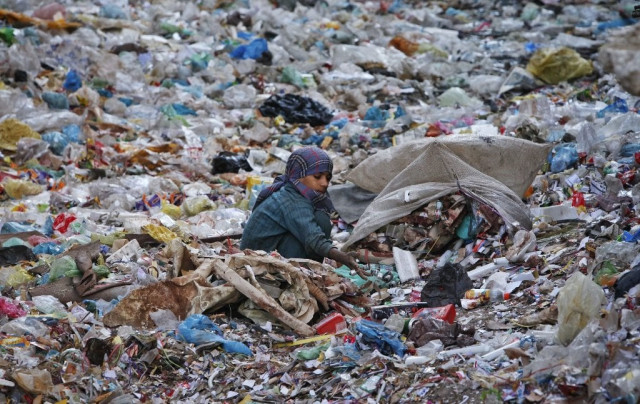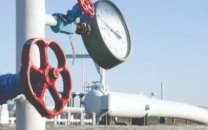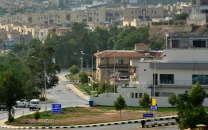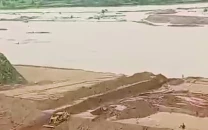Permanent solution?: Landfill site in Nilore under consideration
Mechanised system for waste collection from major roads also under study.

Mechanised system for waste collection from major roads also under study. PHOTO: REUTERS
After years of dumping waste all over the capital, evenin the foothills of the Margallas, city managers are examining the viability of a permanent landfill site near Nilore, a suburb outside the federal capital.
Nilore is located at the extreme end of Zone IV. The process of identifying sites for landfill was initiated by the Capital Development Authority (CDA) a month ago after the Supreme Court, while disposing of a suo motu case regarding the dumping of solid waste in the foothills of the Margallas in Sector D-12, directed the CDA to formulate a long-term strategy for the disposal of solid waste.
The CDA had informed the court that its planning wing was in the process of selecting a feasible site for the purpose.
The court had asked the CDA to materialise the plan at the earliest and submit a report.
“The proposed site is one among two recently identified for sanitary landfill development. It’s the most suitable because of the area’s topography which consists of ditches and ravines,” a senior official said.
There are several construction restrictions in the area of Nilore because of sensitive instalments, he added. “The land near Nilore and Tumair cannot be developed for residential or commercial purposes in future, because of security reasons.”
Rejecting the proposal of the second site in Sector I-17, he said, the sector was planned for the establishment industrial units. “Though, currently there are none, we hope there will be several in the future,” he said.
The CDA is also trying to explore an effective system of waste collection. “We’re considering a proposal to adopt a mechanised system for waste collection from major roads and avenues of the city. The option of outsourcing it on the pattern of Lahore and other major cities of Punjab is also under consideration,” the official said.
The CDA estimates that the volume of waste generation in Islamabad is around 600 metric tons per day. About 91 per cent of the waste generated in Islamabad comprises of household and green waste, while the rest includes plastic, glass and construction material.
Sectors I-11 and G-6 collectively generate 168.6 tons of garbage per day, while sectors E-8 and G-5 generate 2.5 tons of waste per day. The Sanitation directorate employs 2,200 workers.
The CDA has outsourced waste collection in six residential sectors, G-6, G-7, G-8, G-9, G-10 and I-10. Despite a system of waste collection, CDA had failed to earmark a landfill site in Islamabad.
In the late 1980’s the authority started dumping garbage in Sector H-12 and continued the practice till 2006, later, it was shifted to Sector H-11. But after the Islamabad High Court’s order, Sector I-14 was selected as the new site in 2010. It was later shifted to I-12 in 2011 and in 2013 to Sector D-12. After the SC took notice, CDA shifted its dumping site to Sector I-12.
In 2010, there was a proposal to establish a landfill site near Kuri village, but after strong opposition from locals and environmentalists, the idea was dropped in 2012. The CDA’s sanitation directorate covers only 1 million, around half of the capital’s population.
There is no systematic collection or disposal of solid waste from areas administered by the ICT administration. The garbage generated in these areas is thrown in empty plots, nullahs and ravines.
CDA Environment Member Sanaullah Aman said CDA was in the process of selecting a landfill site.
Published in The Express Tribune, February 18th, 2014.



















COMMENTS
Comments are moderated and generally will be posted if they are on-topic and not abusive.
For more information, please see our Comments FAQ